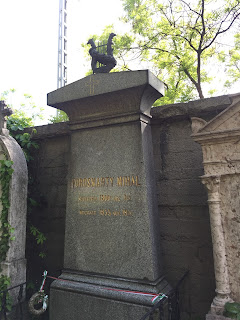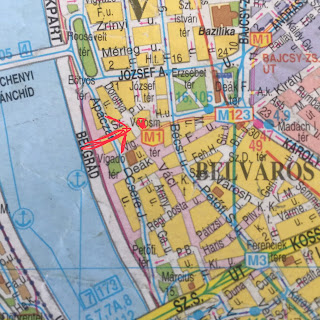I am also a little disappointed. In my ignorance, I had all sorts of vague notions of his heroism and nobility, as well as half-formed imaginings about his adventurous deeds. Vörösmarty's significance is enormous to Hungarians, but to a non-Hungarian it is difficult to understand why he deserves quite such a huge monument, (and yet it must be greatly loved, as it is tenderly wrapped up against the cold every single winter).
Vörösmarty was a writer, it turns out. He composed one of the nation's favourite poems. Two lines of it are inscribed below his feet on the monument:
"Hazádnák rendületlenűl légy híve, óh magyar" - "Oh Hungarian, to your homeland be unfailingly true."
I admire any nation that reveres its poets, and Hungary apparently does.
There are twenty figures on the lower part of the monument. They represent different members of Hungarian society. Both Vörösmarty and the twenty figures are made from Carrara marble, although the base of the monument is limestone. It was erected in 1908 and buried in the base somewhere, still visible if you can find it, is a single coin, which was the donation of an extremely poor person to the fund to erect the statue. The sculptor was so moved by this re-enactment of the widow's mite that he ensured it could be seen in the finished work.
This inscription tells of a Finnish sculptor, Yrjö Liipola who lived and worked in Hungary from 1904-1934, acting as Finnish consul from 1925-1934. He was a student of the sculptor Ede Kallós, and Kallós made him the model for the flag-bearing student.
Here is Vörösmarty's grave in the Kerepesi Cemetery:
It stands directly facing the shocking remnants of the former regime:
Nearby, inexplicably always adorned with freshly brought flowers, is the grave of the thuggish Communist dictator, Matyás Rákosi. How strange that when faced with these things, I find myself suddenly in sympathy with those who wish to drag down statues and sweep away all traces of those they consider to be evil imperialists. I certainly find it insulting to someone genuinely loved by Hungarians to have these reminders of a quite different kind of Hungarian so close to where the poet lies:

















No comments:
Post a Comment